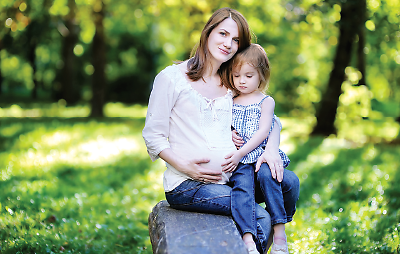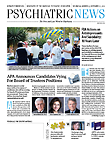Length of Time Between Pregnancies Associated With ASD in Offspring
A study published in the latest issue of the Journal of Child and Adolescent Psychiatry found that children who are conceived either less than one year or more than five years after the birth of a sibling may be at higher risk for autism spectrum disorder (ASD) than other children.
Researchers from the Department of Psychiatry at Columbia University analyzed records of nearly 7,400 children born between 1987 and 2005 in Finland to investigate the impact of maternal interpregnancy intervals and a diagnosis of ASD in offspring.
The results showed that children who were conceived less than one year after the birth of a sibling were 1.5 times more likely to be diagnosed with ASD, compared with those conceived from two to three years after a sibling’s birth. Children born five to 10 years after their siblings were 30 percent more likely to be diagnosed with ASD. Risk for the disorder was further increased in children conceived after interpregnancy intervals of more than 10 years.
“This study provides further evidence that environmental factors occurring during or near the prenatal period play a role in autism, a serious and disabling condition that afflicts millions of individuals and that is increasing in prevalence,” commented Alan Brown, M.D., M.P.H., senior author and a professor of psychiatry and epidemiology at Columbia. The researchers noted that the study results do not suggest that the length of time between pregnancies per se is a cause of ASD, but rather it is a proxy for other factors (such as the prenatal environment) that are more directly related to the chance of a child’s developing the condition.
Recycle Bins May Reveal Alcohol Use Patterns In Older Adults
Contents in a recycling bin of a residential dwelling may provide information beyond suggesting whether a household is eco-friendly—it may also expose alcohol drinking patterns.
Researchers from Ohio State University surveyed 174 participants aged 60 or older to assess the drinking behaviors of people living in a residential center for low-income seniors. Taking the study a step further, the researchers placed bogus recycling bins as a second method for measuring drinking patterns.
The survey portion of the analysis showed that drinking among older adults was similar to that found in previous studies, with 25 percent of people within the age category consuming one drink per week. However, the results from the recycling study showed that drinking tended to spike around the time associated with the receipt of the residents’ Social Security checks.
Though the rates for alcohol use among older adults are generally less than those of younger adults, the researchers noted that when considering the potential complications associated with drinking and aging—such as increased risk of health problems like diabetes, cognitive impairment, and depression—this could be a potential public-health concern. They concluded that it is important for families to be cognizant of the drinking habits of older family members and ask physicians about the adverse consequences associated with drinking among senior populations.
Memory Slips May Signal Risk for Dementia Later in Life
Older adults who report forgetfulness may be more likely to develop cognitive impairment later in life, a study published in Neurology has found.
More than 500 people with an average age of 73 and free of dementia were surveyed yearly for an average of 10 years on their perception of their memory. The brains of the participants were examined postmortem for evidence of Alzheimer’s disease.
The results showed that 56 percent of the participants reported changes in their memory, at an average age of 82. People who complained about their memory were nearly three times more likely to later develop cognitive impairment. Approximately 16 percent of the participants developed dementia during the study, and of this group, 80 percent reported changes in memory throughout the course of the study.
“What’s notable about our study is the time it took for this transition to dementia or clinical impairment to occur—about 12 years for dementia and nine years for clinical impairment—after the memory complaints began,” commented study author Richard Kryscio, Ph.D., chair of biostatistics at the University of Kentucky School of Public Health. “These findings suggest that there may be a window for intervention before a diagnosable problem shows up,” he said.
Kryscio concluded that while these findings add to accumulating evidence that self-reported memory complaints can be predictive of cognitive impairment later in life, there is no cause for immediate alarm if a person cannot remember common things, such as where they placed their keys.
Sleep Disorders Common in Children With Mental Illness
Researchers from Bradley Hospital in Rhode Island led a study with 183 children, ranging from newborns to 6-year-olds, to assess the prevalence of sleep disorders in children with psychiatric illness.
The results showed that 41 percent of the children being studied met diagnostic criteria (in accordance with Diagnostic Infant and Preschool Assessment) for a sleep disorder. The most common sleep disorder was sleep-onset insomnia, which was prevalent in 23 percent of the children in the study. Sleep problems were especially common in children with disruptive behavior, attention, anxiety, and mood disorder symptoms.
“This study is a great reminder that it’s critical for mental health providers working with young children and their families to ask about children’s sleep,” said the study’s lead author, John Boekamp, Ph.D., clinical director of the Pediatric Partial Hospital Program at Bradley. “Simple questions about children’s sleep patterns, including how long it takes a child to fall asleep at night and how frequently a child awakens after falling asleep, may yield important information that is relevant to clinical care, even when sleep problems are not the primary focus of treatment.”
Traumatic Brain Injury May Increase Dementia Risk
A study in JAMA Neurology shows that traumatic brain injury (TBI) may be associated with an increased risk for dementia in adults aged 55 and older.
Researchers from the University of California, San Francisco, examined health records of approximately 52,000 adults aged 55 and older with traumatic injury and 6,610 patients with non-TBI trauma to quantify the risk for dementia (defined as fractures excluding the head and neck).
The analysis showed that 8.9 percent of the participants with a history of TBI developed dementia, compared with 5.9 percent of those with no head or neck trauma. Data also showed that moderate to severe TBI was associated with an increased risk for dementia in those aged 55 or older, while mild TBI was associated with an increased risk for participants aged 65 or older.
In an accompanying editorial, Steven DeKosky, M.D., director of the Alzheimer’s Disease Research Center at the University of Pittsburgh and a professor of psychiatry, commended the researchers for using a very large database to examine dementia risk following significant trauma. “[The] research ... will enable us to ask important questions, evolve new or more informed queries, and both lead and complement the translational questions that are before us.” He concluded that because dementia is both a global problem and a pathological conundrum, the complementary use of big databases and basic neuroscience analyses may offer the most promise in understanding the overlap of cognitive decline and TBI. ■

